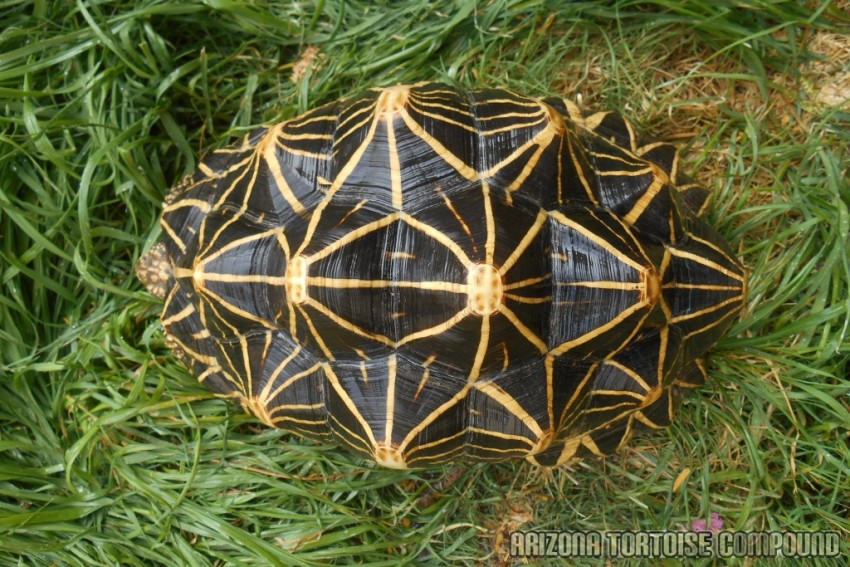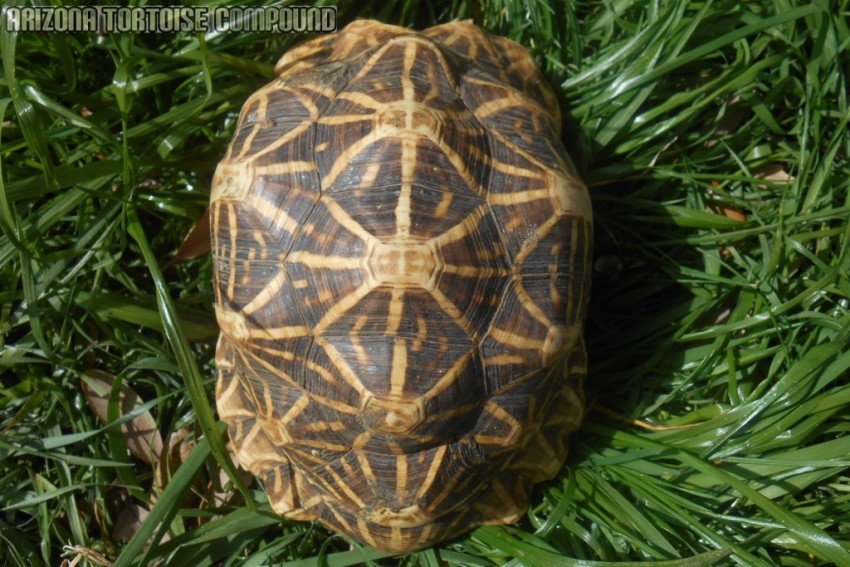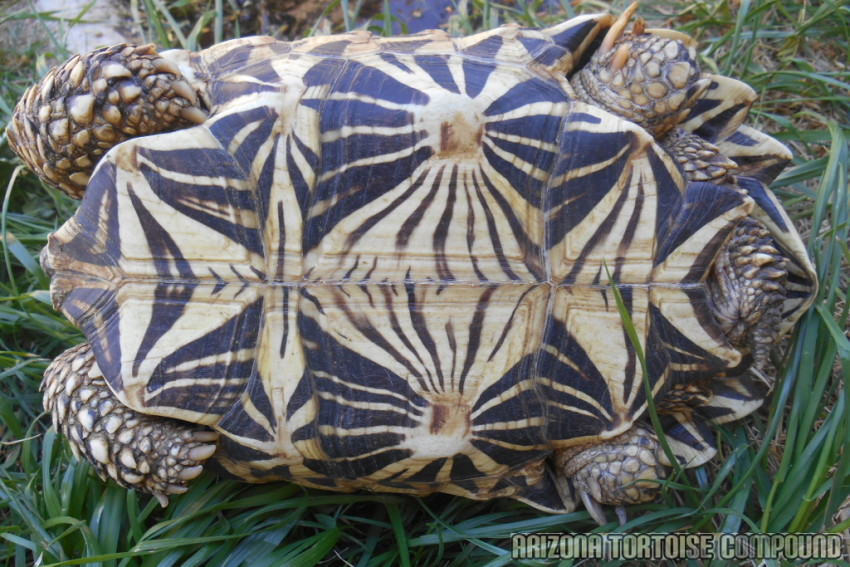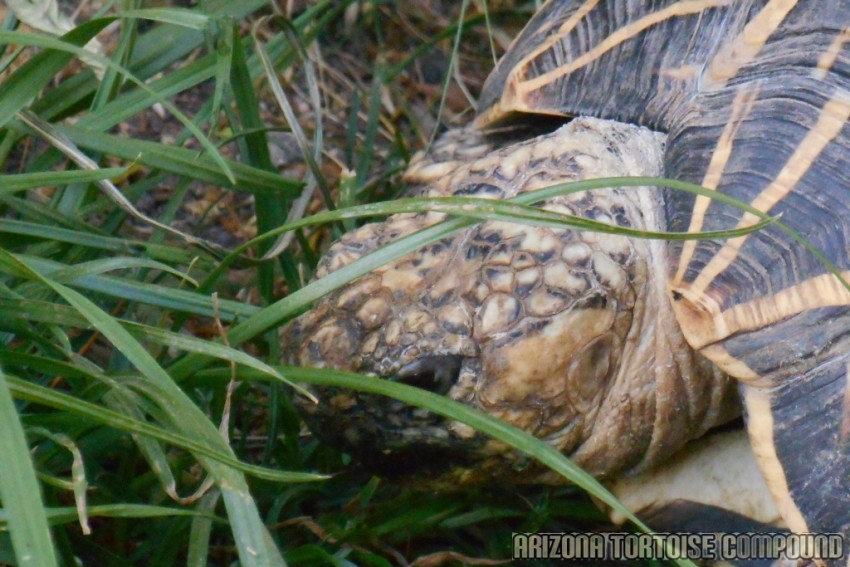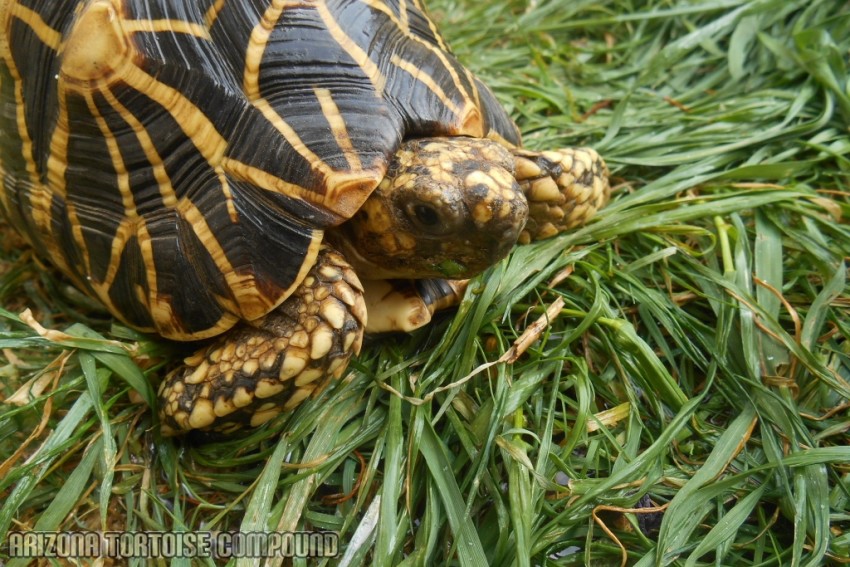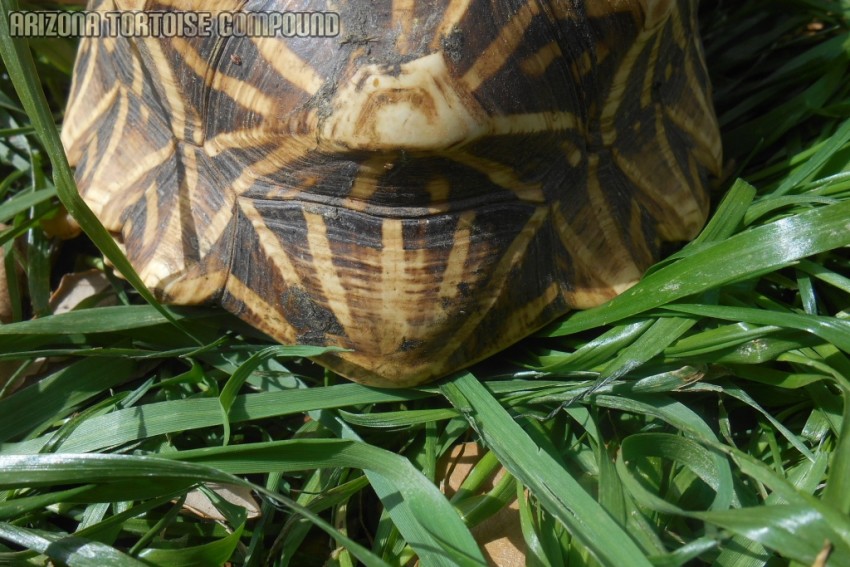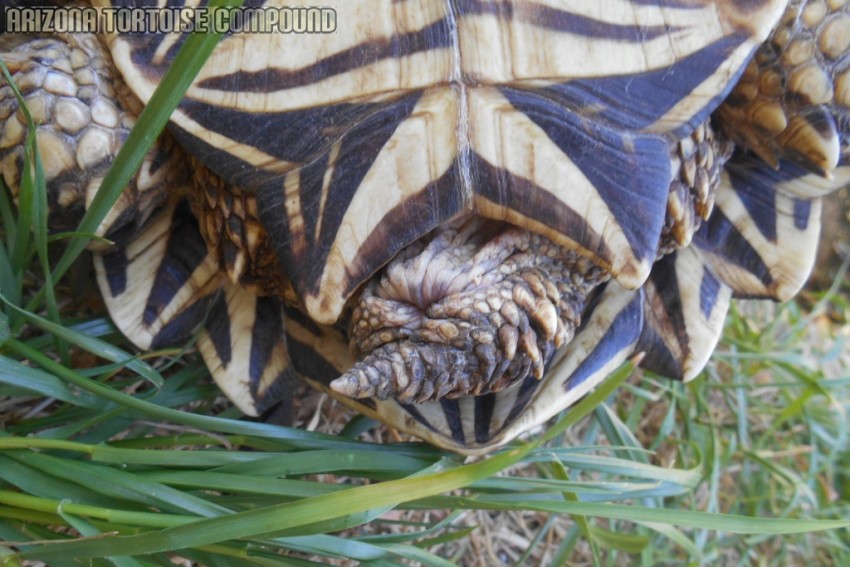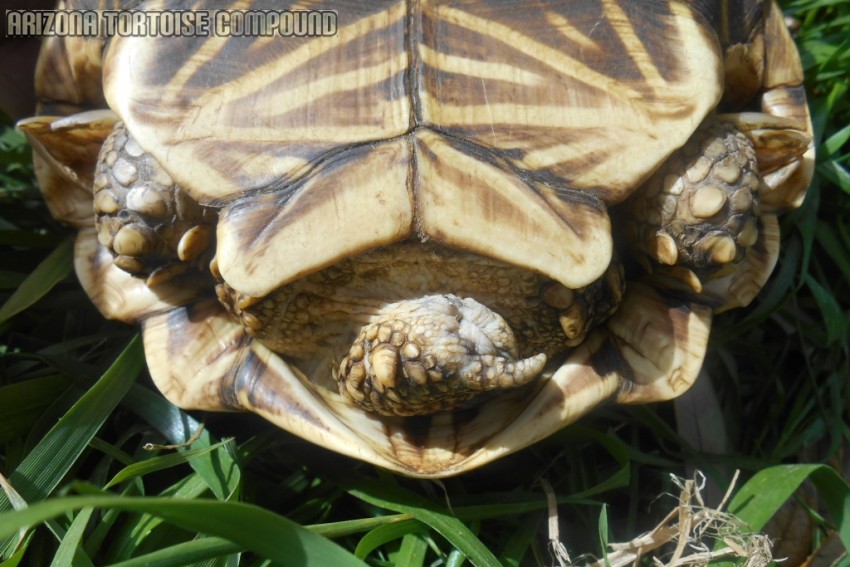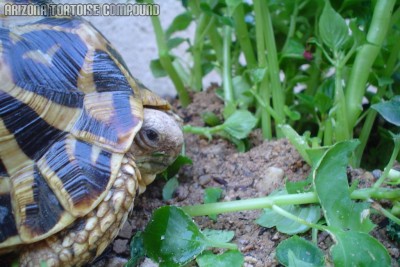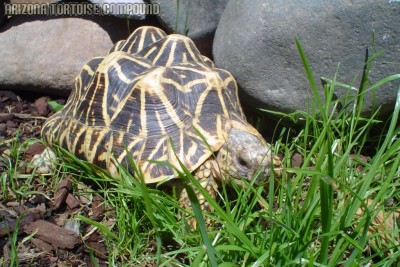Description and Identification
At least two geographically separated variants can be perceived -- some suggest four variants. In the United States these variants are perceived as the Indian Star Tortoise and Sri Lankan Star Tortoise (when four variants are considered, they are broken into a northern and southern version of the previously named variants). There is also another species, Geochelone platynota (Burmese Star Tortoise), which has a very similar appearance. Star Tortoises are medium-sized, high-domed tortoises, with the Burmese growing the largest and Indians the smallest. Females have a more rounded appearance and a much smaller tail than that of the male. In addition to these characteristics, other sexually dimorphic traits are visible; males have a concave plastron while the plastron of a female is completely flat and the gap between the anal and supracaudal plates is larger in females. The main color of the shell is light cream to dark yellowish brown, and a number of wedge-shaped black fields on each scute form the characteristic star pattern. Classically, the Burmese Star's radiating lines are more blurred in appearance as to the Sri Lankan Star's patterns being more thin lines and defined. The Indians Star's patterns are thicker, not blurred and ranges in different thicknesses. Depending on the variant, these tortoises can reach sizes ranging from 6 to 13 inches.
Distribution
The Star Tortoise is native to India, Sri Lanka, and west into Pakistan. In India they are found in the central and southern parts of the country, excluding lower Bengal. In Pakistan, they are found in the Sindh province.
Native Habitat
Geochelone elegans occupies a wide range of habitats including: moist deciduous forest, semi-arid lowland forests, thorn scrub forests, arid grasslands, and semi-desert. These tortoises have a high tolerance for seasonally wet or dry habitats, with many populations living in areas with a monsoon (rainy) season followed by an extensive hot and dry period. They sometimes live in agricultural areas.
Wild Diet
The Star Tortoise's natural diet is predominantly vegetarian. It consists mainly of different grasses, but the species does consume carrion and insects when given the opportunity. In the drier habitat types, fresh grass is only available during and shortly after the monsoon period. During the long periods of drought and cool weather, the Star tortoise is rather inactive, and it can go without food for long periods of time. The Indian Star Tortoise browses in the dry forests of the Indian sub-continent in search of a wide variety of plant life from leaves, to fruits and berries and numerous different species of flower that are found growing in such arid environments.
Behavior
Like most other tortoise species during dry, hot weather, Star Tortoises are mostly active during the early morning and late afternoon. The rest of the day, these tortoises will hide under vegetation or other cover. During the rainy season, their activity level increases tremendously and they can be observed moving around and feeding during much of the day. In western India and Pakistan they become inactive during the colder winter months.
Reproduction
When the rainy season arrives, the breeding season commences. About 60 to 90 days post-mating, usually in the evening, females begin wandering and sniffing the ground. When a female finds an acceptable nest site, she often urinates to soften the soil and begins excavating a flask-shaped nest with her hind feet. After she has laid her eggs, she re-fills the nest and flattens the soil with her plastron. Ear year, the female will lay from 1 to as many as 9 clutches, of 1 to 10 eggs per clutch. Incubation lasts from 47 to 180 days. In the wild, females may become sexually mature in 8 to 12 years and males in 6 to 8 years, but these times can be shortened considerably in captive tortoises. Courtship is somewhat more subdued than in many other species of tortoises, often with little or no shoving, butting, and biting of females -- which are often much larger than the males in this species. During mating, the male emits grunt-like sounds.
This Care Guide is an external Care Guide. While it is possible this care guide may not be for the exact species you were looking for, it provides information suitable for your species. This Care Guide link will take you away from theTurtleRoom. We only link to care guides we trust. Thanks for visiting theTurtleRoom.org.
Care GuideSri Lankan Variant
Indian Variant
If you would like to contribute to the photo gallery of any turtle or tortoise species, please email us at [email protected]. You will be credited for any photos you contribute.
| Geochelone elegans |
| (Schoepff, 1795) |
| IUCN Red List: |
 |
| Least Concern (2000) |
| Order: | Testudines |
| Suborder: | Cryptodira |
| Superfamily: | Testudinoidea |
| Family: | Testudinidae |
| Genus: | Geochelone |
| species: | elegans |
| CITES: | Appendix II |
Author:
Editors: Stephen J. Enders, Anthony Pierlioni, Chris Leone, Andrew S. Weber, Ben Forrest, and Andrew Hermes
Sources
Disclaimer: The Species Profiles - Natural History, Care Guide, and Photo Gallery database is an educational resource. It does not cover all Chelonian species in the world, nor does it include all the latest scientific information about the species covered. Though we edit our accounts for accuracy, we cannot guarantee all information in those accounts. While theTurtleRoom's staff and contributors provide references to books and websites that we believe are reputable, we cannot necessarily endorse the contents of references beyond our control.

This work by theTurtleRoom is licensed under a Creative Commons Attribution-NonCommercial-ShareAlike 4.0 International License.


